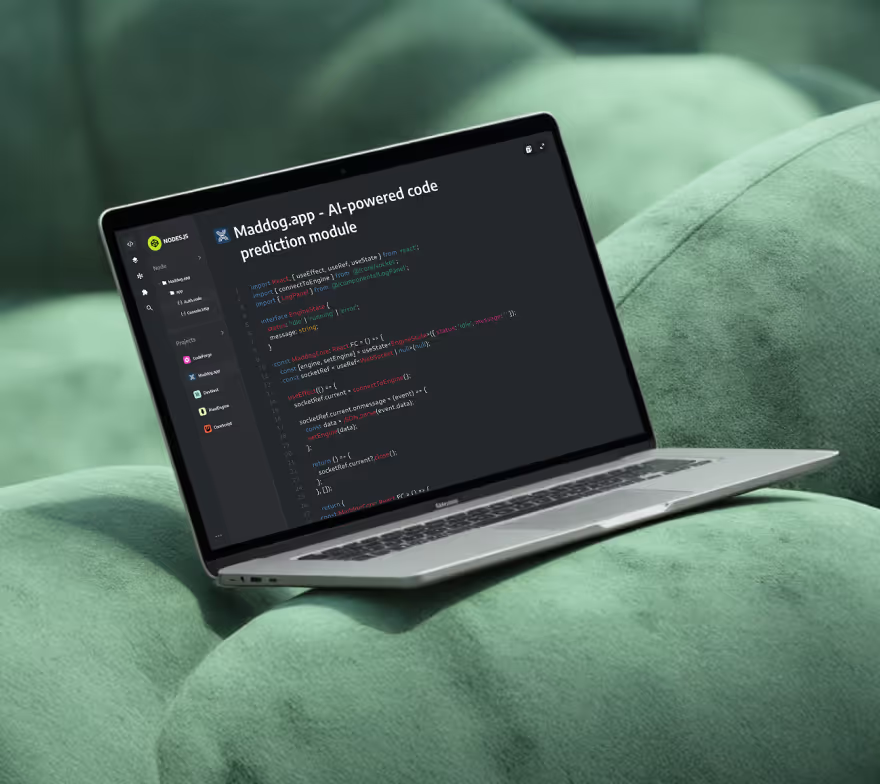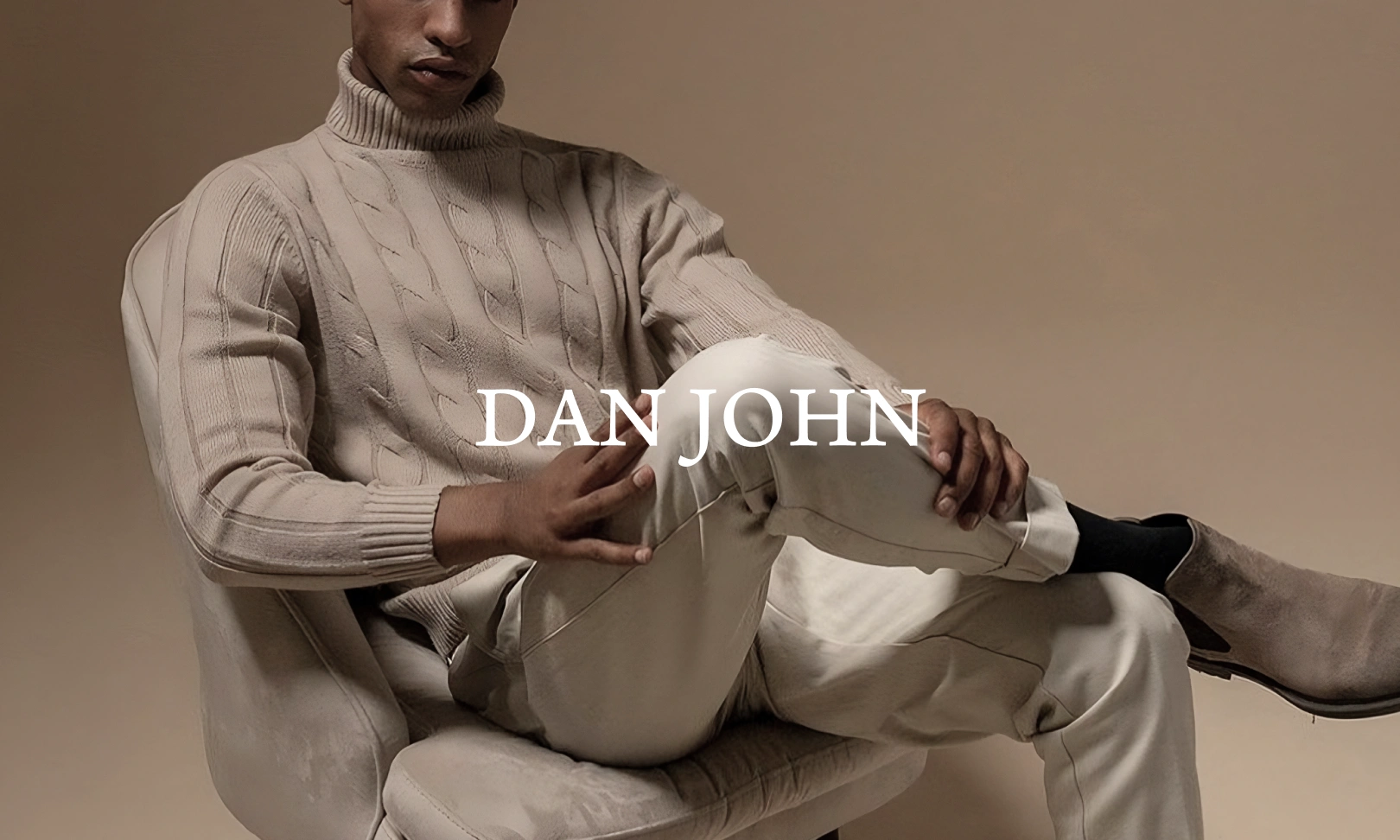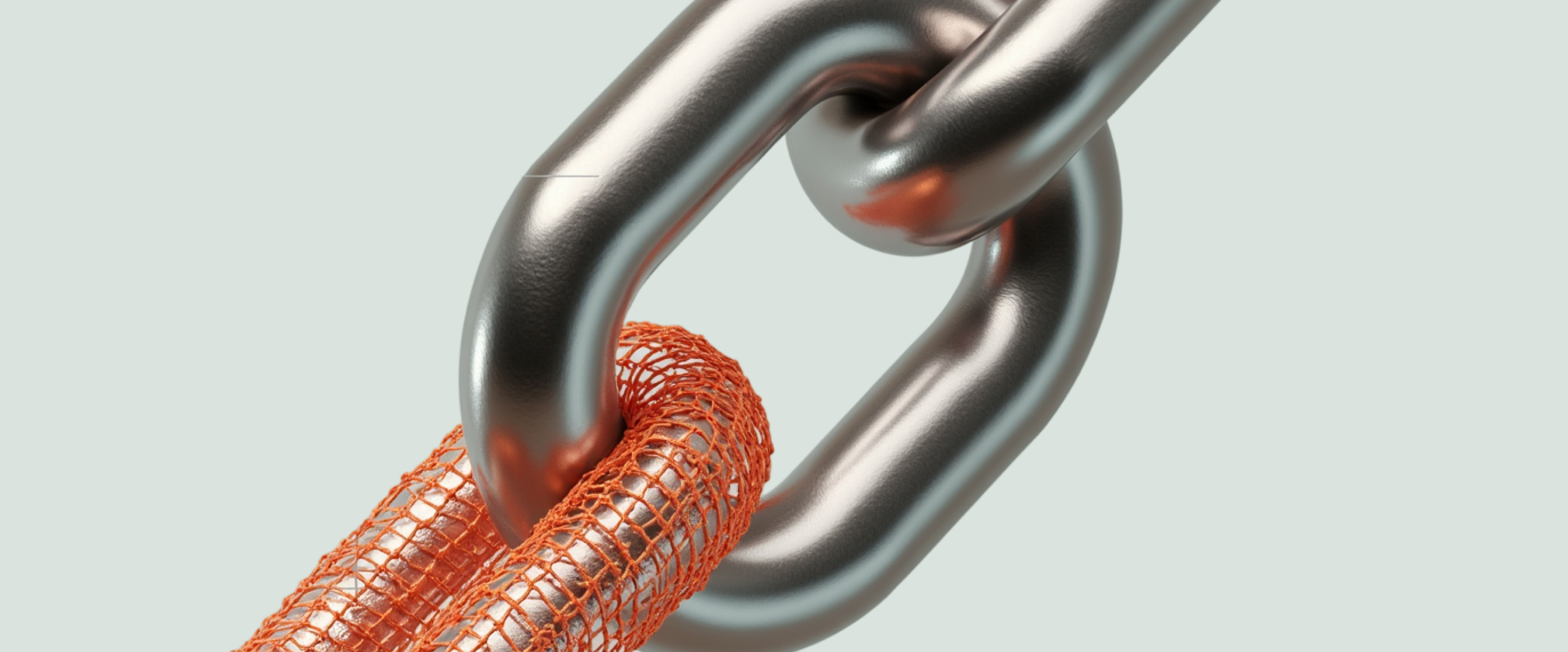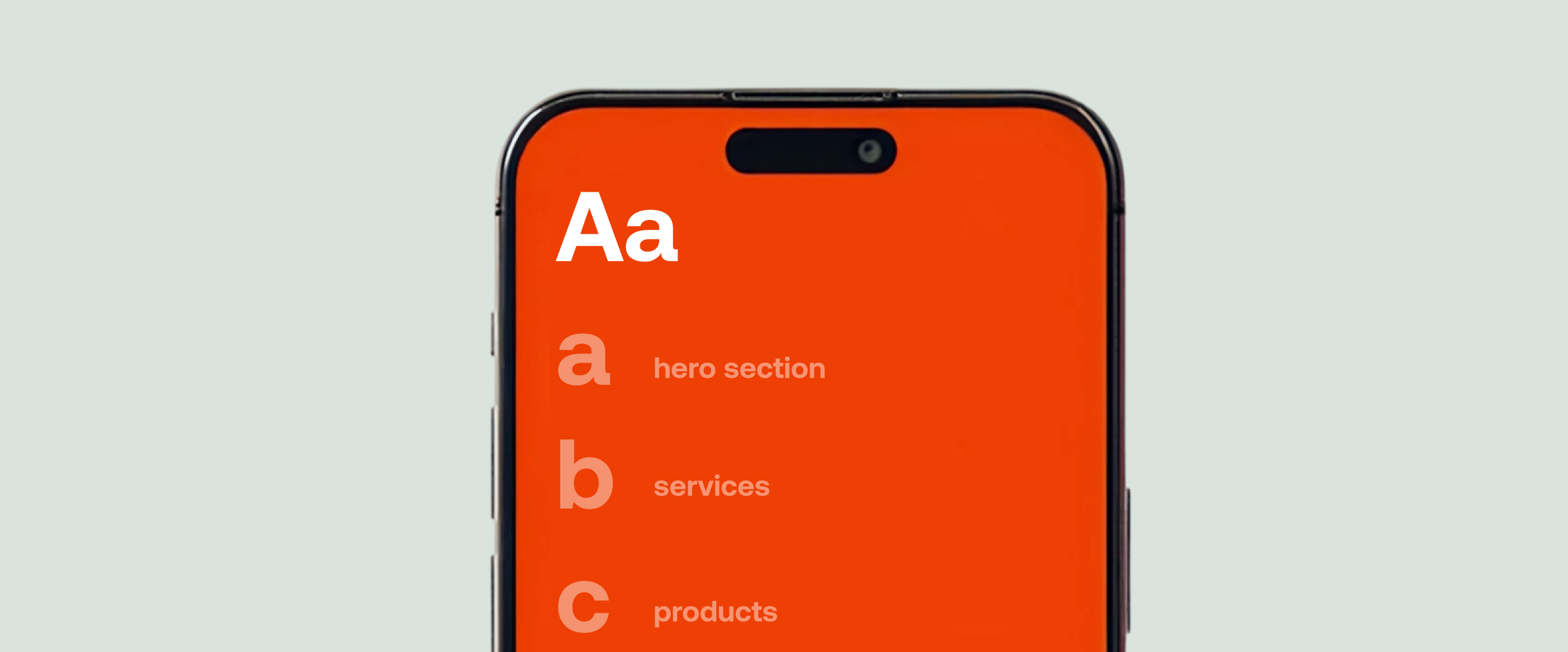











Recognitions
projects
Services

What is the future of UX design?



In this article, we will explore how technologies are shaping the future of UX design in software development and explore the most exciting UX/UI trends of 2023 that brands and UX designers should keep a keen eye on.
In the past, user interface (UI) and user experience (UX) design primarily focused on functionality. However, the evolution of technology has led to a shift in approach. Today, designers are more concerned with creating immersive experiences that captivate the user's senses, provide a sense of presence in the digital environment and establish a meaningful connection between users and the digital product.
As user-centred design practices gain prominence, businesses recognise the significance of investing in UX design to gain a competitive edge. A positive user experience fosters brand loyalty, boosts customer satisfaction, and drives conversions.
Transforming User Experiences: The Influence of Emerging Technologies on UX Design
In recent years, a wave of cutting-edge technologies has surged forth, promising to reshape the way we interact with digital interfaces. Think of it like a tech-driven makeover for the way we engage online. Artificial intelligence (AI), augmented reality (AR), virtual reality (VR), and voice user interfaces (VUI) are the driving forces behind this transformative shift. They are like the architects, designing new and exciting ways for us to experience digital content.
As 2023 unfolds, AI and machine learning have seamlessly woven themselves into the fabric of UX design. It looks like they have become part of the design team, triggering a whole new way of thinking about design. They are helping designers craft interactive experiences that solve problems and create meaningful connections between companies and their customers.
One of AI's superpowers is its ability to understand how we behave and what we like. Through meticulous analysis of patterns and historical data, AI breathes life into predictive analytics, guiding designers towards informed decisions, customised content, and even interfaces, bringing together users and content that are a perfect fit.
But AI's talents don't stop there. It is also a time-saver. Think of it as the ultimate multitasker, taking care of the mundane tasks that designers used to do. Whether it is analysing user feedback, generating wireframes, crafting intricate design layouts, or even writing code, AI is like a helpful sidekick that lets designers focus on more creative and strategic aspects of the design process. It even has a knack for spotting hidden patterns in complex data, which translates into intuitive and engaging experiences for us.
And the results? They are impressive. A whopping 92.1% of businesses have seen measurable benefits from AI, and around 35% of businesses are already tapping into its potential. Retail giants are jumping on board too, with an 80% adoption rate projected by 2025, according to the Social Shepherd data (32 Essential AI Statistics You Need to Know in 2023 (thesocialshepherd.com)).
Now, let's talk about AR and VR – the dynamic duo of immersion. These technologies are like the magicians of the digital world, blurring the lines between reality and imagination. VR, with its three-dimensional wonderland, lets us interact with digital elements as if they were real. It is like stepping into a new dimension, where the digital becomes tangible.
AR, on the other hand, adds a layer of magic to the real world, embellishing existing environments with computer-generated imagery, sounds, and other sensory inputs. Imagine digital fireworks lighting up your living room or virtual guides leading you through a museum. These technologies whisk us away to digital wonderlands, where we can explore, engage, and experience in ways we never thought possible.
This fusion of the real and the digital is a game-changer for web design. These immersive experiences craft digital realms that captivate us. From realistic product demos to virtual try-ons for shopping, these technologies are making the digital world feel more like home. Even the business world is catching on – Facebook's Horizon Workrooms is a prime example of how VR can transform remote meetings into immersive experiences.
AR and VR are seen as the future of business-customer interactions, as industry major players like Apple, Google, and Microsoft dedicate substantial investments to their development.
The VR market is projected to surge to $20.9 billion by 2025, as highlighted by Virtual Reality Market Revenue Trends and Growth Drivers 2030 | MarketsandMarkets. Meanwhile, AR propels a revolution in the shopping experience, with projections indicating its market size soaring to $88.4 billion by 2026.
And that is not all. voice-based interfaces (VUI) are also making waves.
Daily, around 27% of customers use voice assistant AI technology – they are like the friendly neighbourhood assistants, always ready to help us with a simple command (32 Essential AI Statistics You Need to Know in 2023 (thesocialshepherd.com)).
VUIs work their magic with the power of natural language processing (NLP) to interpret user commands and generate appropriate responses or contextually relevant interactions. NLP, responsible for facilitating interactions between computers and human language, has enabled voice assistants like Alexa, Siri, and Google Assistant to understand us and provide personalised assistance.
But the rise of VUIs brings some challenges, too. Designing intuitive interfaces that offer enhanced natural interactions requires careful thought and meticulous consideration of language and interface structure. Overcoming challenges like pronunciation and accuracy is like mastering a new skill, but the rewards are worth it.
Despite these challenges, voice-based UIs offer an array of advantages over traditional interfaces. Their hands-free nature makes them particularly suitable for situations where users need freedom of movement, or for those with disabilities or limited technological familiarity. As screen fatigue becomes a real concern, VUIs offer a breath of fresh air. They let us interact with devices without needing to stare at a screen, making activities like exercising or driving seamless and distraction-free. For example, culinary apps like Voicipe have integrated voice-activated features, turning cooking into a hands-free delight, including tasks like creating shopping lists and personalised recipes.
The surge in voice assistants and smart speakers underscores the importance of voice search optimisation as a critical UX design trend for 2023.
Global companies are rushing to embrace these technologies, and the VUI market is projected to surge to $29.02 billion by 2027, as forecasted by Voice User Interface Market Size, Share, Growth, Trends Industry Analysis Forecast 2026 (technavio.com).
The voice of the future is calling, and we are all invited to the party!
Crafting Connections: the Power of Personalisation in UX Design
The world of UX design is witnessing the rapid growth of personalised experiences across digital touchpoints, especially in the ecommerce sector. Tailoring UX design to individual user needs and preferences has become a significant trend, instilling a sense of value and recognition in potential consumers. This involves tailoring the visual aesthetics of a website's interface to align with a customer's choices.
The significance of data-driven personalisation is evident, as studies highlight the risk of brands losing customer loyalty by delivering impersonalised content.
An alarming 60% of surveyed shoppers, according to a 2022 Statista report, stated that they would be less loyal to such brands.
On the other hand, 84% of consumers are interested in personalised products and are willing to pay more for tailored offerings, as reported by Accenture's Retail Personalization study (Retail Personalization | Accenture).
The advantages of personalised UI/UX design extend beyond mere interest. Improved user engagement flourishes when experiences are tailored, resulting in increased interaction, prolonged visits, and frequent returns to websites and apps. This approach also enhances user retention rates, as individuals feel a deeper connection with interfaces that understand their distinct needs and preferences, which makes it harder to consider switching to competitors.
Furthermore, personalisation bears the potential to elevate the overall user experience by reducing friction in the user journey, thereby facilitating the accomplishment of goals. Personalisation also resonates emotionally with users – just think about customised iTunes playlists, Facebook shopping recommendations and pre-made Shopify wish lists.
In 2023, UX designers are harnessing hyper-personalisation techniques to adapt interfaces, layouts, and functionalities based on users' specific preferences, contexts, and emotional states. The advent of biometric technology has introduced novel avenues, such as affective computing, enabling systems to interpret and respond to human emotions through facial expressions, voice intonations, and body language. This realm holds the promise of more empathetic and personalised user experiences. Beyond content recommendations, hyper-personalisation thrives on real-time data to offer customised journeys, cultivating deeper connections and heightened satisfaction.
Context-aware design and adaptive interfaces are assuming pivotal roles in shaping the future of web design. Adaptive web design - a technique that tailors website layouts for diverse devices and screen sizes - enables websites to dynamically adjust to various platforms, including desktop computers, tablets, and mobile phones. Upon a user's entry, adaptive design identifies the device type and offers a corresponding layout, ensuring an optimal viewing experience.
Adaptive web design boasts several benefits, including faster page loading by delivering only necessary features, an optimised multiplatform experience, and a broader audience reach, acknowledging varying technological capabilities.
Such interfaces can evolve with user behaviour, preferences, and needs over time, exemplified by Spotify's Discover Weekly playlist, which offers personalised music recommendations based on listening habits. Adaptive design's fluidity is evident in its layout adjustment based on browser window size, facilitating seamless viewing across devices without manual intervention.
As we move forward, web design will focus more on delivering personalised and contextual user experiences. With advancements in artificial intelligence and machine learning, designers can create dynamic interfaces that adapt to individual users, which will further enhance user engagement by making websites more relevant, improve conversion rates by simplifying users' actions, foster brand loyalty by making users feel valued and appreciated, and establish deeper connections between users and websites, fostering a sense of community.
In the ongoing year of 2023, personalisation and adaptive design are expected to continue growing due to the rising demand for hyper-tailored digital interactions among consumers. Businesses are actively implementing adaptive UX/UI design to ensure a seamless and consistent customer journey across all platforms, from desktop computers to smartwatches.
Crafting Experiences for Every Device
In modern design, there is a kaleidoscope of devices and platforms – smartphones, wearables, and beyond. Within this landscape, the role of UX designers is to sculpt experiences that smoothly integrate with the diverse range of modern interactions and to guide the path towards a harmonious digital future.
Today, in August 2023, the world sees a staggering 6.92 billion smartphone users, accounting for 85.95% of the Earth's inhabitants (BankMyCell). Zooming out, a grand total of 7.33 billion individuals own both smart and feature phones, which is 91.04% of the world's population.
As mobile devices are becoming our digital companions, crafting experiences that thrive on small screens, touch gestures, and varying connection speeds becomes crucial. This approach, known as mobile-first design, ensures websites are tailored to mobile environments, guaranteeing swift loading times and intuitive interactions. The perks extend further – mobile-friendly sites hold sway in search engine algorithms, bolstering SEO rankings, attracting curious visitors and increasing conversion rates.
But the tale doesn't end here - responsive web design takes the stage. With a flick of code, it adapts content across devices, offering a seamless experience without the hassle of platform-specific adjustments. This digital chameleon ensures content is elegantly tailored for every screen, enhancing readability and user satisfaction. The perks are plenty – quicker development, cost savings, simplified analytics, and a fluid experience across the digital realm.
Yet, the landscape extends beyond mere screens. Enter the Internet of things (IoT), a realm brimming with potential and promises. As IoT devices proliferate, UX designers find themselves bridging the gap between devices and human interaction and creating a world where your surroundings dance to the tune of your devices.
As our world becomes more connected, UX designers face a monumental task – crafting experiences that seamlessly blend the digital and the physical. Wearable tech like the iconic Apple Watch and a myriad of smart devices have essentially become extensions of ourselves, allowing us to interact effortlessly with our surroundings. Powered by ultra-low power processors and cutting-edge wireless technology, these devices serve various purposes, ranging from work and entertainment to shopping and communication. Experts predict that by 2025, the world will be home to roughly one trillion connected devices, generating an astronomical volume of data within the IoT landscape.
Yet, with great connectivity comes great responsibility. The IoT revolution bestows upon us a massive amount of data – a wealth that can fuel innovation, revolutionise businesses, empower societies and aid in personal advancements. But as data flows like a river, designers must be vigilant guardians, ensuring its reliability and security, especially as organisations increasingly rely on machine-generated data for real-time business processes.
Exploring the Boundaries of Ethical UX Design
In UX design, where the digital and human worlds intertwine, a distinctive terrain demands attention – the realm of ethics. As we look to the future of user experience, the ethical dimensions of designs emerge as powerful factors shaping the path ahead. Among these, two essential pillars emerge: privacy and data protection, and the inclusive and accessible design.
A study conducted by the Pew Research Center highlights that 79% of Americans express concerns about the use of their personal data by companies. In a world increasingly wary of digital privacy, the rise of privacy-centred design (PCD) has emerged as a crucial trend within UX design's narrative. PCD lays the foundation for a new era where transparency, user control, and trust become the cornerstones of every interface. As upholding user trust has become crucial, UX designers have risen to the occasion, constructing robust fortresses of transparent data collection practices, fortified authentication methods, and crystal-clear privacy policies to bolster user confidence and resilience. This design philosophy ensures that the handling of user data is not just an afterthought but an integral part of the user experience, allowing users to comprehend what information is being gathered and how it will be employed.
Biometric authentication methods, such as fingerprint scanning and facial recognition, have become increasingly prevalent, dethroning the conventional password and PIN. These security guardians not only streamline user access but also elevate the barricades against unauthorised entry. UX designers wield these advancements with finesse, making it a seamless, secure experience.
Yet, this harmonious journey is only a prelude to the future. As biometric technologies evolve, UX designers are likely to introduce new ways of secure interaction, shaping an era where trust, security, and personalisation intersect harmoniously.
Beyond the horizon of security lies another area demanding our ethical stewardship: accessibility and inclusivity. Here, UX design becomes a bridge, connecting the world of digital products to the diverse canvas of human capabilities. In March 2023, the World Health Organisation's report declared that 1.3 billion souls, a staggering 16% of the global population, navigate the world with a unique prism of abilities. Inclusive design is essential to ensure that digital landscapes embrace every traveller, regardless of their journey's unique narrative – with alternative text for images, simplified language, and keyboard navigation options.
But the responsibility doesn't end here. Designers must be vigilant, ensuring AI's algorithms don’t harbour biases. As we venture forth, legality echoes in the background – the Americans with Disabilities Act (ADA) declares that accessibility is a universal right. Yet, beyond the legal mandates, lies a grander harmony – the ethical call for equality. Designers hold the power to compose an inclusive and accessible world that resonates with every note of the human experience.
The Dynamic Duo of Collaboration and Agility in UX Design
In user experience design, two more powerful forces are driving us to a bright and innovative future: collaborative design and agile approaches. These methodologies act as the powerful engine of modern UX design that fuels creativity and efficiency. It is an exciting world where designers and developers, users and creators come together to shape remarkable experiences.
The secret ingredients that enable designers and developers to synchronise their efforts seamlessly are design systems and component libraries. Design systems – comprehensive libraries of reusable components – harmonise elements, styles, and guidelines to ensure that the user journey remains consistent and delightful. This collaborative synergy doesn't just save time (by 41%, as reported by InVision) – it transforms the creative process into seamless collaboration, elevating the end product. Among examples of popular design systems are Material Design, a comprehensive library of components created by Google, Bootstrap and Foundation, free and open-source design systems.
But wait, there is more to the story. It is design thinking and user-centred design that bridge the gap between creators and users. It is like having a direct line to the people who matter most – the ones who will actually use your creation. Designers step into the shoes of real users, journeying alongside them from idea to reality. It is a partnership where empathy and innovation intertwine, resulting in solutions that truly resonate.
Design-led companies, as proclaimed by McKinsey, are the vanguards of innovation, outperforming their competitors in revenue growth. This approach places users at the heart of the creative process, ensuring that their needs and aspirations become the guiding stars. User-centred design (UCD) isn't just a strategy – it is a commitment to crafting experiences that stand the test of time.
UCD doesn't follow a linear path; it is an iterative expedition where insights evolve and designs refine. This journey isn't without its challenges, though. Ensuring that the participants mirror the real user profile is a quest that demands ingenuity. The standard outlines four fundamental activities: gathering requirements, understanding organisational and user needs, crafting prototypes, and evaluating the user experience.
To achieve these UCD goals, designers use a diverse toolkit of methodologies. Within this toolkit, focus groups take the lead in revealing the intricate mechanics of user sentiment, providing valuable insights into how users truly feel. Simultaneously, usability testing steps in to uncover the concealed problems that may impede smooth interactions, ensuring that the user journey remains obstacle-free.
Just as an artist carefully arranges colours on a palette, card sorting meticulously organises content categories, contributing to a clear and coherent user experience. Additionally, questionnaires play the role of a data collector, capturing statistical insights that contribute to a comprehensive understanding of user preferences and behaviours.
Incorporating this varied range of methodologies, designers immerse themselves in comprehending users' needs on a profound level. By actively integrating these methods into the decision-making and design processes, designers shape solutions that are both user-centric and effective, ensuring that the end product aligns harmoniously with users' expectations and aspirations.
In the grand theatre of UX design, collaborative design and agile approaches take centre stage. They propel designers, developers, and users into a unified journey. As the curtain rises on the next act of innovation, remember that this dynamic interplay is what transforms pixels into experiences that touch hearts and redefine possibilities.
From Pixels to People-Centric Experiences
In the world of design, a new chapter is being written – an exciting tale that moves beyond the confines of pixel-perfection and ventures into the realm of holistic experiences. This transformation is driven by a powerful approach called design thinking, a method that brings clarity to the intricate web of human-world connections that define how users engage with products and designs. As the boundaries between technology and our everyday lives blur, design thinking emerges as a guiding star, helping us navigate the complexities and deliver user experiences that resonate deeply on all fronts.
At the heart of this transformation lies the concept of holistic design – an ambitious goal that seeks to construct an entire ecosystem of user experience, of interactions that harmonise with users' emotions and needs. Imagine this: when you offer a holistic user experience, you are extending a virtual handshake that says, "We understand you. We care about you". It is like a warm embrace in the digital world – a comfort or delight that users find in every interaction with your brand.
In the past, designers were focused on creating visually stunning pixel-perfect designs. But today, the spotlight has shifted towards crafting journeys that leave lasting imprints. These are experiences that stitch together every touchpoint. Holistic design demands an eagle-eyed perspective, where the product is examined from every conceivable angle. From stakeholders to environments, every element is meticulously tailored to accommodate the intricate web of relationships – user behaviours, aims, and the technology landscape they navigate.
The magic lies in acknowledging all the dimensions that exist between users and their digital interactions. This isn't just about creating an impressive user interface – it is about orchestrating a symphony of experiences where every note matters. A holistic mindset enables designers to look beyond aesthetics and ensure that each aspect sings in harmony, contributing to the grander narrative.
The journey to holistic design isn't confined to the design department – it is an expedition that requires the whole company on board. It is about cultivating a mindset that is not content with merely a visually pleasing UI. It is about unifying approaches, practices, and philosophies to create experiences that truly resonate.
Miklos Philips, a Principal UX Designer at Toptal, encapsulates this perfectly, emphasising that holistic design isn't limited to digital interfaces – it spans the entire human experience. It encompasses people, devices, moments, environments, and psychology. The goal? To create an optimal experience that transcends screens and fuses with the real world.
To make holistic design thrive, organisations need a culture shift. They must embrace the idea of micro-moments – those subtle interactions that shape the user journey. Every touchpoint counts, and the cause-and-effect relationships between them must be meticulously examined.
In this context, the role of UX/UI designers has transformed from mere aesthetics to profound interaction architects. They are the connectors, bridging the gap between technology and human connection. Armed with creativity and analytics, they sculpt interfaces that do more than just communicate – they engage on a visceral level. From research to prototypes, wireframes to visuals, their work shapes the final product that meets user expectations.
Delving into psychology adds an extra layer of depth to UX design. Incorporating psychological insights creates experiences that touch users on a deeper level. As designers embrace psychology, anthropology, and AI, the future of UX design unfolds – a future where every interaction tells a story, and every touchpoint leaves a mark.
Final Remarks
At Fourmeta, we recognize the significance of this data-driven approach to the future of UX design. We understand that as the digital landscape evolves, it becomes even more crucial to embrace emerging technologies, personalize experiences, consider context, and uphold ethical principles. Our team of UX designers is dedicated to shaping the future of user experiences by staying at the forefront of innovation, leveraging analytics, and ensuring that every interaction remains user-centric, enjoyable, and impactful. Through our commitment to these principles, we aim to create transformative and meaningful digital interactions that resonate with users worldwide.




.avif)






















.avif)



